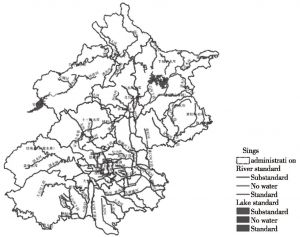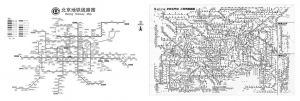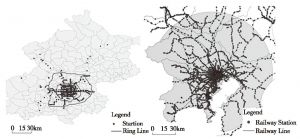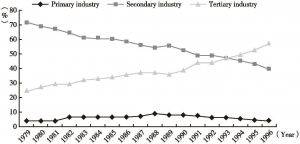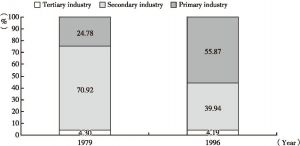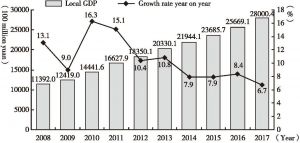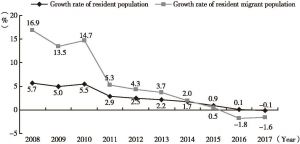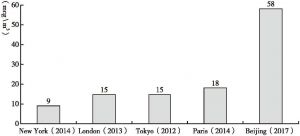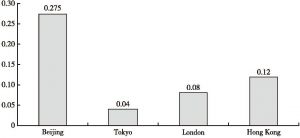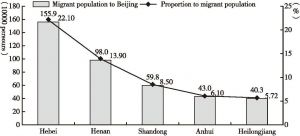报告
National Central City Construction of Beijing: Progress, Features and Vision
摘要
改革开放以来,北京城市发展经历了加速转型、优化调整、高质量发展等不同发展阶段,城市功能定位也不断调整和完善。习近平总书记提出“四个中心”的首都城市战略定位,为北京发展指明了前进方向。围绕首都城市战略定位建设,北京“四个中心”地位不断增强,经济社会各领域全面发展,质量效益显著提高。但北京发展仍面临严峻的“城市病”问题,城市治理能力和公共服务水平有待提升。未来北京要深入落实首都城市战略定位,坚持新发展理念,加快非首都功能疏解,优化城市空间布局,提升创新驱动发展能力,推动经济社会高质量发展。
作者
Zhao Hong research fellow, PhD, postdoctoral supervisor, Vice-President of Beijing Academy of Social Sciences and consultant of Beijing Municipal People’s Government Expert Advisory Panel. Main research fields: headquarters economy, industrial economy and regional economy.
赵弘 ,研究员,博士,博士后导师,享受国务院政府特殊津贴专家,北京市人民政府专家顾问团顾问,北京市社会科学院原副院长、中国总部经济研究中心主任,中关村创新发展研究院院长,兼任中国区域经济学会副会长等学术职务,入选北京“高创计划”哲学社会科学和文化艺术领军人才、北京市新世纪社科理论人才“百人工程”,北京市宣传文化系统“四个一批”人才。在我国区域经济、产业经济、科技创新、现代化都市圈等研究领域有较高的知名度和影响力,在国内首次提出“总部经济”理论,出版了我国第一部总部经济理论专著——《总部经济》,在全国引起强烈反响。先后主持完成国家社科基金、国家自然科学基金、省部级以及其他各类研究课题150余项,出版著作20余部,获“北京市科学技术奖”“北京市哲学社会科学优秀成果奖”等省部级奖10项。
检索正文关键字
报告目录
-
I Beijing’s Evolution since Reform and Opening-up
- (I) Stage of Seeking Transformation: 1979—1996
- (II) Stage of Accelerated Transformation: 1997—2007
- (III) Stage of Optimization and Adjustment: 2008—2014
- (IV) Stage of High-quality Development: since 2014
-
II Functional Positioning and Construction Effects of Beijing as a City
- (I) Increased Capability to Guarantee Services as the National Political Center
- 1 It Firmly Establishes a General View and Always Maintain a High Degree of Consistency with the Party Central Committee in Ideological, Political and Operational Aspects
- 2 It Continues to Strengthen the Ability to Guarantee the Country’s Political Services
- (II) Reinforced Position as the National Cultural Center
- 1 Beijing Actively Promote the Socialist Core Values
- 2 The Protection of the Historic and Cultural City Made Positive Progress
- 3 The Leading Position of Cultural and Creative Industries Further Strengthened
- 4 The Public Cultural Service System Continuously Improved
- 5 A number of Influential Cultural Brands Formed
- (III) Strengthened Function as the International Exchanges Center
- 1 International Organizations and Elements Constantly Gathering
- 2 International Conferences and Exhibitions Numerous and Influential
- 3 International Exchanges and Cooperation Continued to Grow
- (IV) Strengthened Radiative Role as the National Sci-tech Innovation Center
- 1 Beijing’s Science and Technology Resources Intensive and Innovation in Science and Technology Active
- 2 The Original Innovation Ability Further Enhanced
- 3 The Achievements of Scientific and Technological Innovation Lead the National Development
- (I) Increased Capability to Guarantee Services as the National Political Center
-
III Status-quo and Prominent Problems in Beijing’s Economic and Social Development
- (I) Status-quo
- 1 The Economy Maintained Steady Development with a Slower Growth Trend in Recent Years
- 2 The Industrial Structure Optimized with Increasing Quality and Benefits for Development
- 3 Sci-tech Innovation Played a Stronger Role in the Capital’s Economic Development
- 4 Generally Strengthened Urban Construction and Management
- 5 The Public Services and Social Governance Capabilities Enhanced
- (II) Prominent Problems
- 1 Over-fast Population Growth and Traffic Congestion
- 2 Prominent Conflict between Supply and Demand of Resources and Energy and Mounting Ecological Environment Pressure
- 3 The Gap between Urban Governance Level and the Practical Needs
- 4 Large Room for Improvement in Public Services and Social Governance
- (III) Analysis of the Problem Causes
- 1 Urban Development Concepts to Be Innovated
- 2 The Unreasonable Urban Spatial Structure and Traffic Mix Restrained the City’s Carrying Capacity
- 3 The Industrial Structure and Development Model Remains to be Further Adjusted
- 4 The Unbalanced Development of the Beijing-Tianjin-Hebei Region Worsened Beijing’s Urban Diseases
- (I) Status-quo
-
IV Implications and Visions for Beijing’s Future Development
- (I) Follow the Capital Urban Strategic Positioning and Accelerate Non-capital Function Removal
- (II) Implement the General Urban Plan and Optimize the Urban Spatial Layout
- (III) Continue with Innovative Development and Spearhead to Form an Innovation-drive Development Pattern
- (IV) Enhance Urban Governance Capability and Accelerate Building of an International First-Class Livable City
- V Strengthen Regional Cooperation and Promote Beijing-Tianjin-Hebei Coordinated Regional Development
相关文献
National Central City Construction of Beijing: Progress, Features and Vision
Progress, Feature and Trend of Shanghai National Central City Construction
Progress, Feature and Trend of Tianjin National Central City Construction
Achievements and Outlook of Guangzhou’s National Central City Construction
Progress, Feature and Trend of Chongqing’s National Central City Construction
Practice in and Thinking on Constructing National Central City in Chengdu
Report on Constructing National Central City in Wuhan
Overview and Prospect of National Central City Construction of Zhengzhou
Progress, Features and Trend of National Central City Construction of Xi’an
Practice in and Thinking on Building a Sub-center of Beijing
Practice and Exploration to Turn Chengdu into a New Highland of Inland Opening-up
Building Xi’an into an Innovation Demonstration Zone of Deep Integration of Military and Civilian
Formation, Effect and Impact of “Zhengzhou Model” in Cross-border E-commerce
查看更多>>>


